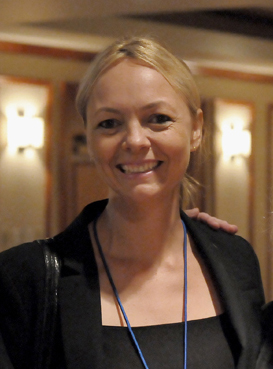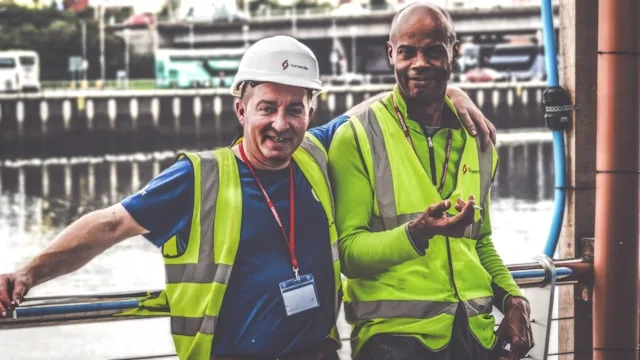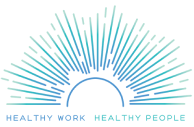An Interview with David LeGrande, MA, RN & Peter Schnall, MD, MPH
Dr. John Froines, an activist and leader in occupational and environmental health, died July 13, 2022.
He was perhaps most well known as an anti-war activist in the 1960s. He was put on trial (and acquitted) along with several fellow activists known as the “Chicago 7.” But Dr. John Froines was also an environmental and occupational health scientist, deeply committed to improving the health and safety of working people. Our HWC Director, Dr. Peter Schnall, and our Labor Outreach Strategist, David Le Grande, both knew and worked with Dr. Froines. We interviewed them and found out that John was also a great supporter of healthy work organization.
How did you know John Froines?
David: During the Presidential administration of Jimmy Carter, John was employed as the Occupational Safety and Health Administration’s director of toxic chemical standards and, subsequently, as the Deputy Director of the National Institute for Occupational Safety and Health (NIOSH). Under his leadership, NIOSH’s Health Hazard Evaluation (HHE) program was greatly expanded to allow Agency investigators to identify and evaluate workplace hazards as requested by workers and their unions.
I came to know him personally, when I was the Health & Safety Director of the Communications Workers of America (CWA) during an investigation focused upon ergonomics-related (i.e., physical, psychological, and psychosocial factors) health outcomes associated with the design and use of visual display terminals (VDTs)/computers. As requested in 1979 by The Newspaper Guild and supported by the Communications Workers of America, the HHE was met with stiff opposition from the newspaper and the computer industries. However, with strong support from John Froines (as well as NIOSH Director, Dr. Tony Robbins), the HHE was conducted and completed.
Peter: I first met John Froines in 1995 at a UCLA meeting involving the UCI COEH where I was a faculty member. John Froines was the Director of the UCLA Center for Occupational and Environmental Health (COEH) and developed a new set of interests in occupational health while working at UCLA. John and I spoke about my research connecting working conditions and psychosocial hazards to health outcomes such as hypertension and CVD. John was interested in promoting occupational health research on this topic, and the need for developing standards for psychosocial stressors to promote healthy work.
How was John supportive of your efforts to improve work organization?
David: Under the direction of NIOSH research program director, Dr. Michael Smith, the VDT/Computer Ergonomics HHE identified an association between VDT use and worker physical, psychological, and psychosocial health effects. Of significance, the journal article from this study was one of the most cited by other scientists in the history of Human Factors. In effect, the HHE led to a VDT worker health revolution in the U.S.
The strong support of Dr. Froines not only allowed the VDT HHE to be conducted, but given the findings identifying physical as well as psychological health outcomes, opened the door for further identification and attempted resolution of work organization factors related to negative psychological and other health outcomes. For example, without John’s support for further investigations, the landmark NIOSH VDT workplace ergonomics study with US West and CWA and numerous follow-up investigations would not have been conducted. And NIOSH may never have taken an interest in Total Worker Health.
Peter: When I met John, he was engaged in promoting healthy work in Mexico and at UCLA. Under his leadership at the COEH, he was promoting a conference in Mexico, the 1st America’s Meeting of Research on Psychosocial Factors, Stress & Mental Health at the Workplace, held in 2006 in Cuernavaca, Mexico, to which he invited me to speak on psychosocial factors at work.
This was a new topic in Occupational Health focusing on the non-physical conditions at work not covered by OSHA, such as job strain, long work hours, job insecurity and many other workplace factors. The conference which introduced the topic of psychosocial factors stimulated many researchers to conduct similar work in Mexico and Latin America leading to the development of an Americas wide network (RIFAPT A.C. – Network of Investigators about Psychosocial Factors at Work) of researchers and activists dedicated to improving the health of working people by improving job characteristics.
John, myself and others collaborated on obtaining funding from NIOSH in 2000 to teach a course in Work and Health at the UCLA School of Public Health. This course began in 2000 for students enrolled in the Southern California Education Research Center including industrial hygiene students, occupational health nursing students and UCLA public health students. The course has now been taught for 22 years.
Shortly after the conference in Cuernavaca, I began work with colleagues on our book Unhealthy Work (2009) the content of which I discussed with John on several occasions. He agreed with the basic thesis of the book, that much of the burden of illness imposed on workers in the U.S., results from psychosocial stressors that are created by work organizational factors. He shared my belief that there was great potential for improving both working conditions and the health of working people by addressing these factors.
Do you have any personal thoughts to share about John Froines?
David: I should also mention Andrea Hricko’s influence upon John. Not only is she John’s wife, but back in the late 1970’s/early 1980’s was heavily involved in VDT ergonomics/safety and health. Andrea was very supportive of CWA and labor’s efforts.
Peter: John was a deep thinker whose interests went beyond the specific fields of his own expertise; he was eager and open to learning and supporting new ideas in the field of occupational medicine.






